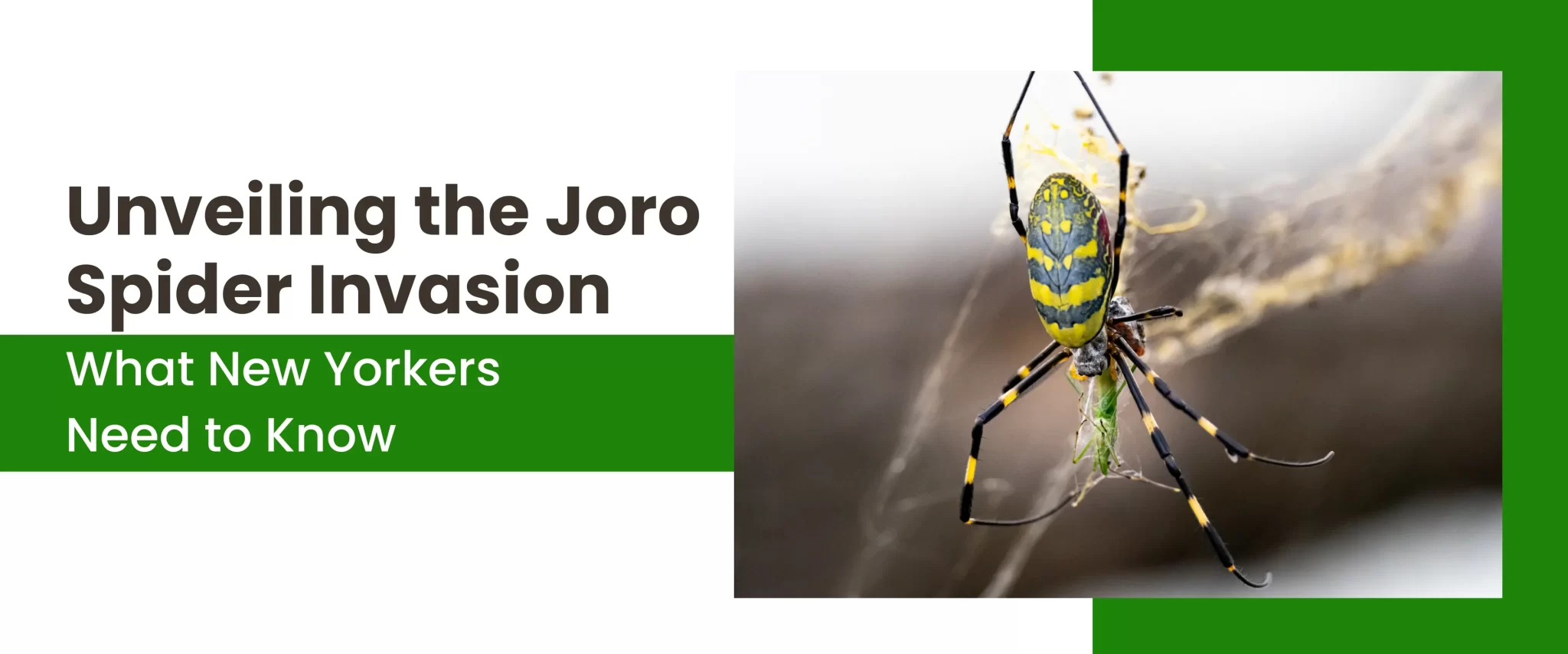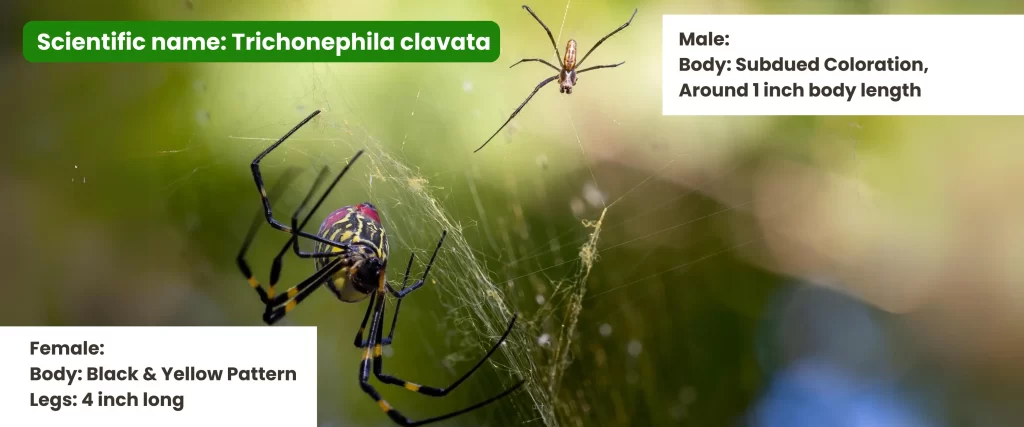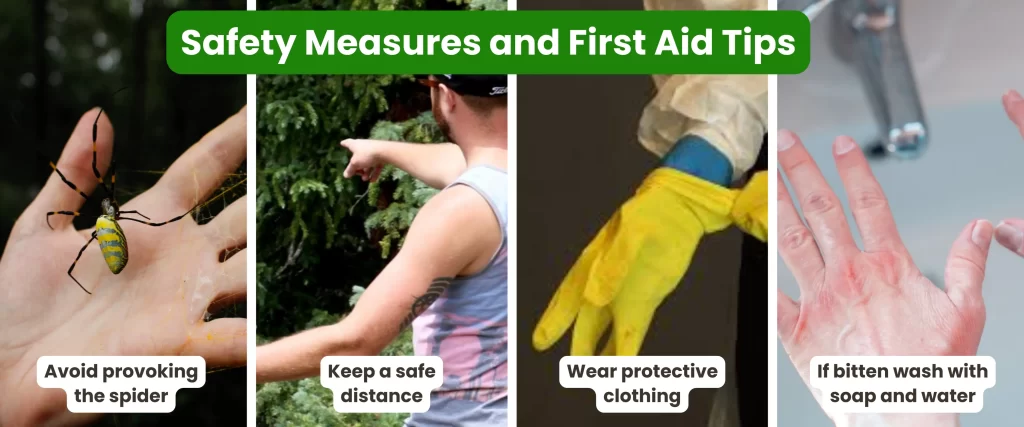
The Joro spider, a large, vibrant arachnid native to East Asia, has been making headlines as it rapidly expands its territory across the United States. What began as a localized phenomenon in the southern states has evolved into a potential nationwide invasion.
With New York City now in the crosshairs of these eight-legged newcomers, it’s crucial to understand what these spiders are, why their presence matters, and how to coexist with them.
Importance of Understanding the Presence of Joro Spiders in New York
The arrival of Joro spiders in New York signifies a significant ecological shift. These spiders are occasional invader, prolific breeders and highly adaptable, raising concerns about their potential impact on native ecosystems. While they pose no direct threat to humans or pets, their sheer numbers and rapid spread could disrupt the delicate balance of nature.
By understanding their behavior, life cycle, and potential benefits or drawbacks, New Yorkers can better prepare for their arrival and mitigate any negative consequences.
What are Joro Spiders?
The Joro spider, scientifically named Trichonephila clavata, is a striking creature known for its large size and vibrant colors. Females boast a distinctive yellow and black body with elongated legs, while males are significantly smaller and less conspicuous.
Native to Japan, China, Korea, and Taiwan, these spiders have been unintentionally introduced to the United States, likely through shipping containers.
Scientific Name and Physical Characteristics

As mentioned, the scientific name of the Joro spider is Trichonephila clavata. Their most recognizable feature is their striking appearance. Females typically have a leg span of up to four inches, making them quite intimidating to the untrained eye.
Their bodies are a mix of bold yellow and black patterns, while their legs are often banded with brown. Males are much smaller, around an inch in body length, and have a more subdued coloration.
Natural Habitat and Behavior
In their native range, Joro spiders inhabit a variety of habitats, including forests, grasslands, and urban areas. They are skilled weavers, constructing large, golden orb webs to capture prey. These spiders are primarily nocturnal, spending their days resting in the center of their webs.
While they are venomous, their bite is generally harmless to humans, comparable to a mild bee sting. Joro spiders are beneficial predators, helping to control populations of insects, including pest species.
Joro Spider Life Cycle Facts
At the beginning of September, joro spiders reach maturity, mate, lay eggs, and usually expire by the end of November. In a year, a single female Joro spider can lay 400–1,500 eggs. Joro spiders are passive hunters who wait for insects to get entangled in their webs, much like many other orb-weaver spiders.
Joro Spiders in New York
Presence and Population of Joro Spiders in New York
As of now, while there have been no confirmed widespread sightings of Joro spiders in New York, experts believe it’s only a matter of time before they establish a significant presence. Given their rapid spread in other states and their adaptability, it’s highly likely that isolated populations may already exist within the state. Monitoring efforts are crucial to track their movement and distribution accurately.
Factors Contributing to Joro Spider’s Establishment in New York
Several factors could contribute to the successful establishment of Joro spiders in New York:

- Climate suitability: New York’s climate, with its warm summers and mild winters, is generally favorable for Joro spiders.
- Human transportation: Unintentional transport through vehicles, shipping containers, or plants can introduce spiders to new areas.
- Abundant food sources: A diverse insect population provides ample prey for Joro spiders to thrive.
- Lack of natural predators: The absence of specific predators that control Joro spider populations in their native range could allow them to flourish.
Potential Impact on Local Ecosystems
While research is ongoing, potential impacts of Joro spiders on New York’s ecosystems include:

- Competition with native spider species: Joro spiders could outcompete native spiders for food and territory, leading to population declines.
- Prey depletion: A surge in Joro spider populations could reduce insect populations, affecting the food chain and ecosystem balance.
- Impact on pollination: If Joro spiders prey heavily on pollinators, it could have consequences for plant reproduction and biodiversity.
- Economic implications: Large Joro spider populations could potentially impact agriculture, horticulture, and tourism.
Is Joro Spider Poisonous?
Examination of the Toxicity of Joro Spiders
While all spiders possess venom to subdue their prey, Joro spiders are generally considered harmless to humans. Their venom is not potent enough to cause serious harm, and their fangs are typically too small to penetrate human skin effectively. In most cases, a Joro spider bite would feel similar to a mild bee sting, causing localized pain, redness, and swelling.
Potential Risks to Humans and Pets
The risk of being bitten by a Joro spider is low, as they are not aggressive and tend to avoid confrontation. However, it’s essential to exercise caution, especially if you have a fear of spiders. For individuals with allergies to insect venom, there might be a heightened risk of an allergic reaction, although this is rare.
Pets are also generally safe around Joro spiders. Their size and behavior typically prevent them from becoming targets.
Safety Measures and First Aid Tips

- Avoid provoking the spider: Do not attempt to handle a Joro spider.
- Keep a safe distance: Admire these creatures from afar.
- Wear protective clothing: If you must work in areas where Joro spiders are prevalent, wear long sleeves and gloves.
- If bitten: Wash the area with soap and water, apply a cold compress to reduce swelling, and monitor for any allergic reactions. If symptoms worsen, seek medical attention.
How to Kill Joro Spiders
While Joro spiders are beneficial insects that help control pest populations, there may be instances where their presence becomes a nuisance or poses a risk to individuals with severe arachnophobia.
Effective Methods to Eliminate Joro Spiders

- Physical removal: Carefully remove the spider and its web using a broom or vacuum cleaner. Release the spider in a distant location if desired.
- Pesticides: Use insecticides specifically designed for spiders. Apply according to the product label instructions. Be cautious when using chemicals indoors and around pets.
- Professional pest control: For severe infestations or persistent problems, consider contacting a professional pest control service.
Chemical and Natural Solutions
- Chemical solutions: Insecticidal sprays, dusts, and foggers can be effective in killing Joro spiders. However, these products should be used with caution and according to label directions.
- Natural solutions: Diatomaceous earth, a powdery substance, can be applied around entry points to dehydrate spiders. Neem oil and citrus-based sprays are natural repellents that can help deter spiders.
Precautions and Safety Guidelines
- Always read and follow product labels: When using pesticides, carefully read and follow the instructions to ensure safe and effective use.
- Protect yourself: Wear gloves and protective clothing when handling chemicals or removing spiders.
- Ventilate the area: Ensure proper ventilation when using chemical treatments indoors.
- Consider alternatives: Before resorting to chemical control, explore non-toxic methods and prevention strategies.
How to Get Rid of Joro Spiders
Prevention Techniques to Avoid Joro Spider Infestations
Preventing a Joro spider infestation is often more effective than dealing with one. Here are some preventive measures:

- Seal entry points: Inspect your home for cracks, gaps, and openings around windows, doors, and foundations. Seal them to prevent spiders from entering.
- Reduce clutter: Spiders love hiding places. Declutter your home to eliminate potential hiding spots.
- Maintain cleanliness: Regularly clean and vacuum your home to remove food crumbs and other insect attractants.
- Outdoor prevention: Trim back bushes and trees that touch your home. Remove debris and clutter from your yard.
Long-Term Strategies for Controlling Their Population
While eliminating all Joro spiders might be challenging, implementing long-term strategies can help manage their population:
- Natural predators: Encourage the presence of natural predators like birds, frogs, and lizards, which can help control spider populations.
- Habitat modification: Make your yard less attractive to spiders by removing potential hiding spots and reducing insect populations.
- Monitoring and early intervention: Regularly inspect your home and property for signs of Joro spiders. Early detection allows for timely intervention.
Tips for Maintaining a Spider-Free Environment
- Regular cleaning: Consistent cleaning and vacuuming help remove spiders and their webs.
- Sticky traps: Place sticky traps in areas where spiders are commonly seen.
- Essential oils: Some essential oils, such as peppermint and tea tree, are believed to repel spiders.
- Professional pest control: For persistent infestations, consider consulting a professional pest control service.
Conclusion
The emergence of Joro spiders in New York presents both challenges and opportunities for residents. Understanding these fascinating creatures, their behavior, and their potential impact is essential for effective management. By implementing preventive measures, practicing safety, and adopting a balanced approach, we can coexist with Joro spiders while minimizing their impact on our lives and the environment.
Summary of Key Points:
- Joro spiders are large, vibrant spiders native to East Asia that have been rapidly spreading across the United States.
- Their impact on New York’s ecosystems is still being studied, but they could potentially compete with native species and affect insect populations.
- While Joro spider bites are generally harmless, it’s important to exercise caution and avoid provoking them.
- Prevention, early detection, and habitat management are crucial for controlling Joro spider populations.
